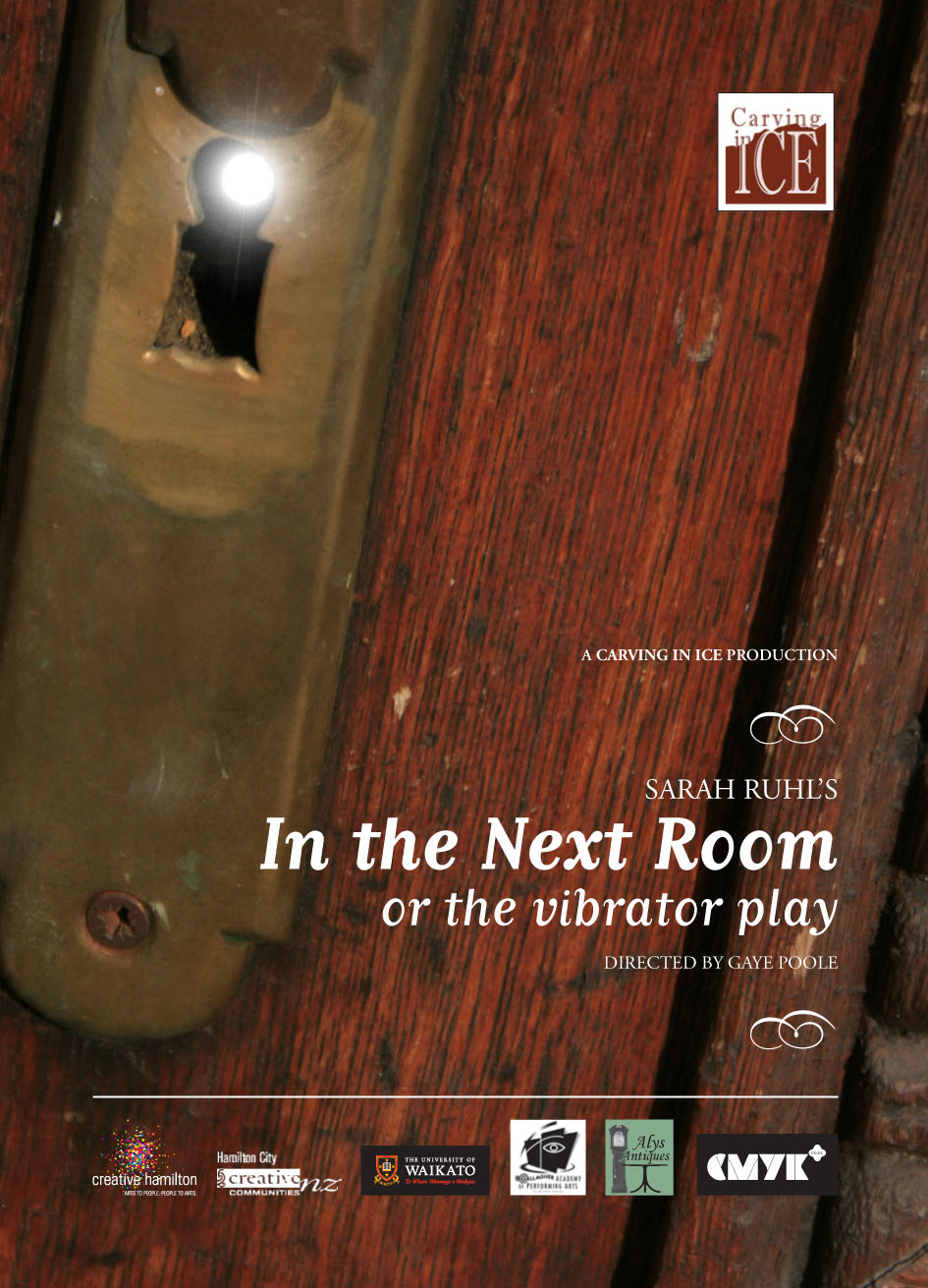In the Next Room or the Vibrator Play by Sarah Ruhl
Directed by Gaye Poole
10 - 18 November 2011
It is the dawn of a new era - Thomas Edison has provided the world with electricity, illuminating parlours and eliminating the flickering glow of candlelight. The benefits of this technology do not pass unnoticed by Dr Givings. Aided by his nurse Dr Givings provides relief from a common ‘women’s condition’ hysteria - whose symptoms include faintness, nervousness, insomnia, irritability, loss of appetites - by turning on his newly invented vibrator.
Sarah Ruhl’s main ‘player’ may be the antique and Chatanooga vibrators but her real subject is the absence of sympathy and understanding between women and the men whose rules they had to live by, and the suspicion and fear surrounding female sexuality.
In the Next Room or the vibrator play is a comedy about marriage, intimacy and electricity.
Summary
In a seemingly perfect Victorian home gentleman and scientist Dr Givings (Nick Wilkinson) has innocently invented an extraordinary new device for treating hysteria in women (and occasionally men): the vibrator. Adjacent to the doctor’s laboratory, his young and energetic wife Catherine (Stephanie Christian) tries to tend to their newborn daughter - and wonders exactly what is going on in the next room. A new hysterical patient Mrs Daldry (Natalie Sangster) and her husband (Jason Wade) bring a wet nurse (Tendai Sithole) and their own complicated relationship into the doctor’s home. Complexities increase as Mrs Daldry is transformed by the treatment and is drawn to Annie, the midwife (Lydia Foley), the soul of tact and reserve.
Another patient, Leo Irving (Michael Potts), an artist also suffering from hysteria, cannot work since being jilted by a beautiful Italian lover. The treatment opens Leo’s eyes and enables him to paint again. Catherine develops a passion for Leo as he paints Elizabeth and the baby, while Leo falls for his subject. Catherine’s feelings of inadequacy force her to take a more drastic step until Dr and Mrs Givings must examine the nature of their own marriage, and what it truly means to love someone.
Time: the dawn of the age of electricity, circa 1880’s.
Place: a prosperous spa town outside of New York City, a town like Saratoga Springs.
This funny, provocative and touching play premiered at Berkeley Rep and subsequently marked Sarah Ruhl’s Broadway debut opening at the Lyceum Theatre on November 19th 2009. It has had professional productions since in Boston, Philadelphia, Melbourne, Sydney.
Background to Sarah Ruhl’s play
Unwilling to acknowledge that conventional sex did not result in orgasm for most women, doctors for millennia used genital massage to bring on 'paroxysms’ to relieve a ‘disease’ called hysteria - a cluster of symptoms that included excitability, mood swings, insomnia and restlessness. Near the end of the nineteenth century doctors began to find manual manipulation too slow to be profitable and looked to technology for help in speeding things up.
They turned to the vibrator. By the turn of the century a doctor could take his pick, from the most humble model driven by foot pedals to the top of the line Chattanooga vibrator. By 1952, the American psychiatric association, recognizing that sexual frustration was not pathology, removed hysteria from its roster.
Sarah Ruhl in writing In the Next Room (2009) has drawn on the following:
The Technology of Orgasm: “Hysteria” the vibrator and women’s sexual satisfaction by Rachel Maines
AC/DC: The Savage Tale of the First Standards War by Tom McNichol
A Social History of Wet Nursing in America: from Breast to Bottle by Janet Golden
Parallel Lives: Five Victorian Marriages by Phyllis Rose.
About Sarah Ruhl’s writing
Sarah Ruhl is known for Dead Man’s Cell Phone, The Clean House and Eurydice.
Her characters always exist on both a poetic plane and a flesh-and-blood one, and while the people in this play speak formal English suitable to the period and the social milieu, they also drift into imagistic reveries. She has a gentle impressionistic touch and a gift for playful symbolism. The play is sprinkled with images that underscore its themes: lightness, darkness, moisture and its absence.
Creative Team & Crew
Artistic Director: Gaye Poole
Production Managers: Gaye Poole, Brendan Theodore and Jason Wade
Stage Manager: Brendan Theodore
Scenic Design: Gaye Poole and Jason Wade
Set Construction: Gary Collins
Costume design and construction: Cherie Cooke
Assistant to Cherie Cooke: Joss Robertson
Lighting Design: Al Williamson
Lighting Operation: Callum Braithwaite
Piano tuition: Adam Maha
Production/rehearsal assistant: Abbie-Rose Foley
Props acquisition: Gaye Poole
Props assistant: Shaye Petterson
Construction of vibrators: Pip Smith
Front of house coordinator/promotion: Rachel Clarke
Stage Hand: Abbie-Rose Foley
Website manager: Brendan Theodore
Graphic Design: Courtney Watt, Catie Wilkinson
Stills photography: Katie Anderson
Videography: Dustin Feneley
Cast
Mrs Givings: Stephanie Christian
Dr Givings: Nick Wilkinson
Mrs Daldry: Natalie Sangster
Mr Daldry: Jason Wade
Elizabeth: Tendai Sithole
Annie: Lydia Foley
Leo: Michael Potts
Reviews
Good vibrations bring sexual and emotional emancipation - Gail Pittaway, Waikato Times

